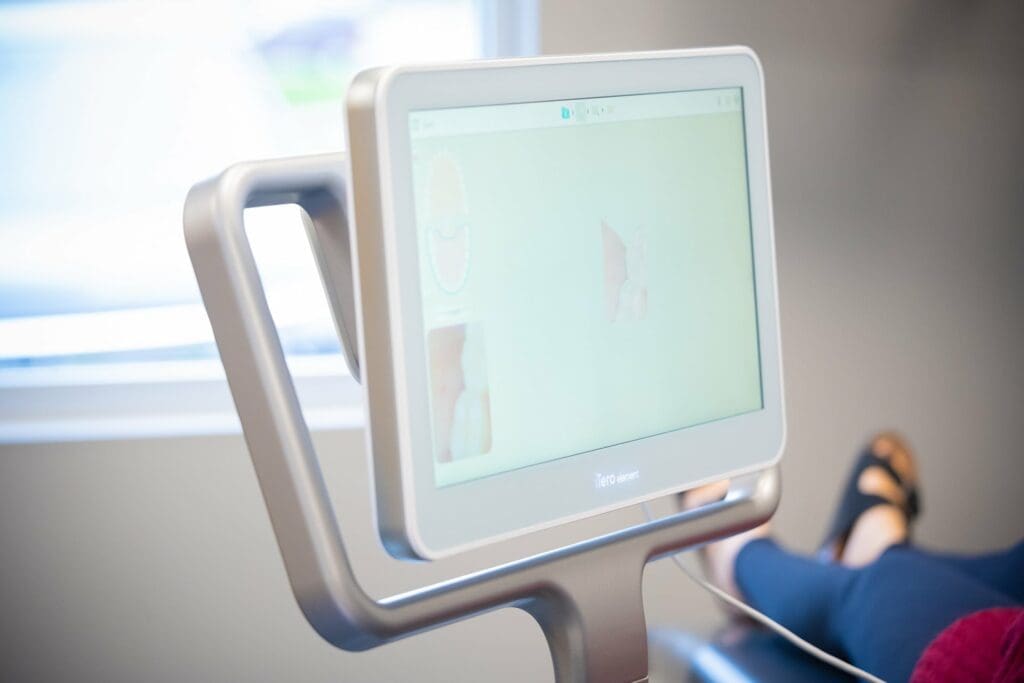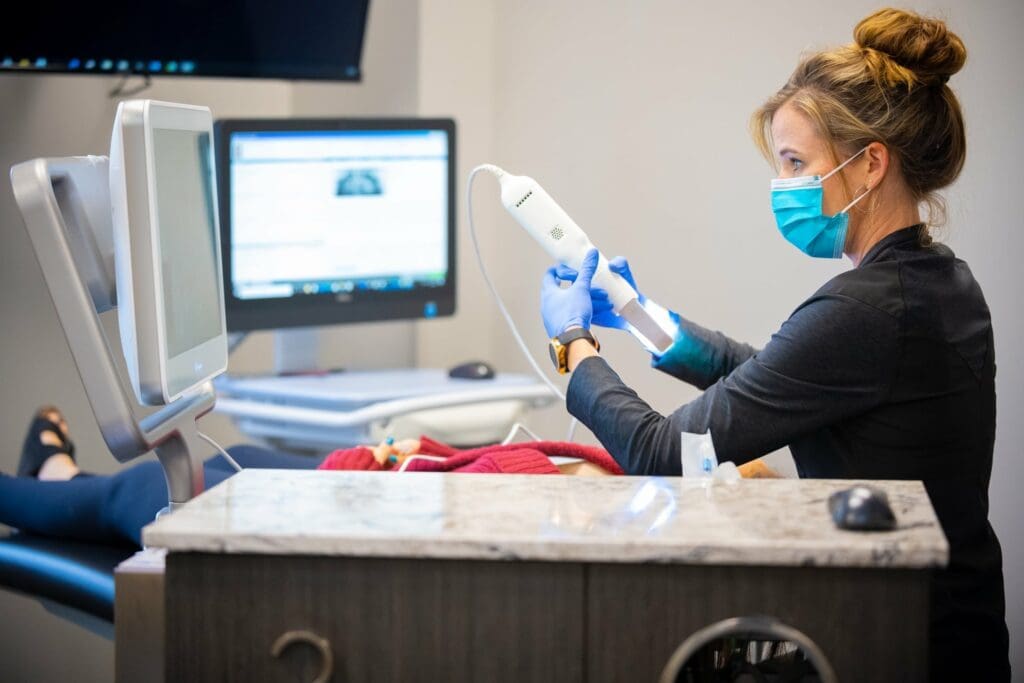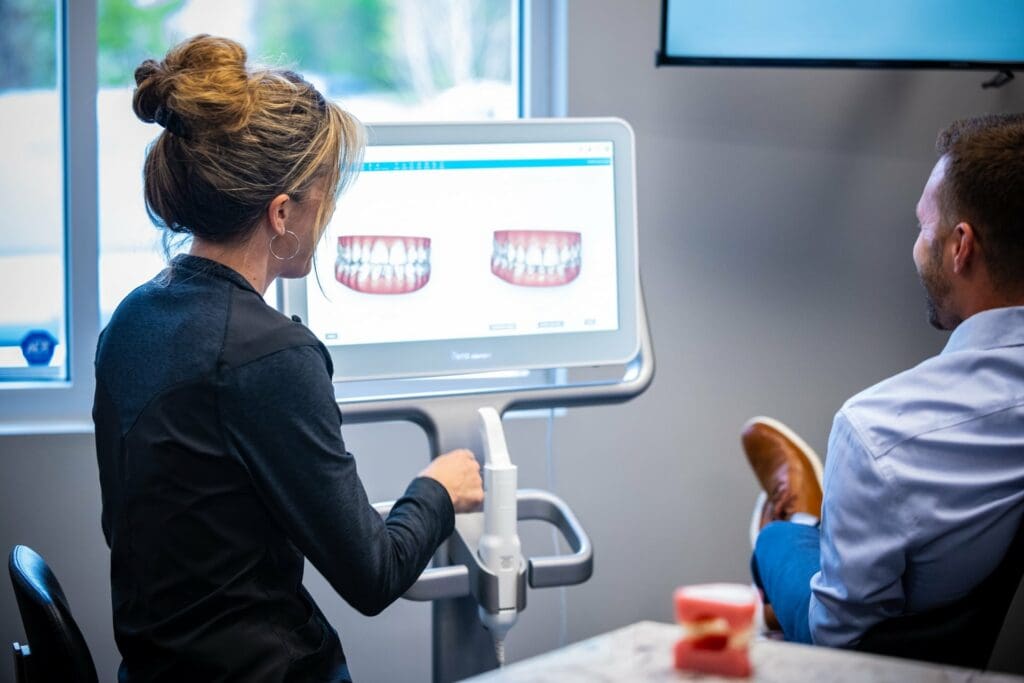Visit Us
Orthodontic technology has come far in the last 30 years. This technology has spurred the advances of orthodontic appliances, such as braces and clear aligners. Today’s orthodontic treatments are more precise and effective than ever before. Part of that is thanks to advances in scanning technology that provides a more detailed, accurate view of the patient’s mouth. The iTero Element 3D Scanner is an excellent example.
Align Orthodontics in Grand Rapids uses the iTero Element scanner on its patients in Grand Rapids and the West Michigan area. The scanner lets Dr. Majznerski create the ideal treatment plan for each patient.
Let’s take a tour of the iTero Element scanner.
Orthodontics today is very different from the way it was 30 years ago. Back then, digital scanners weren’t around. Orthodontists had to rely on plaster casts of patients’ teeth to create treatment plans.
Getting those plaster casts were not fun for the patients.
The first step was to get an impression of the upper teeth, then another of the lower teeth. To do this, the orthodontics assistant filled a metal tray with a goopy, gritty substance. If you were lucky, they could “flavor” it with grape or bubble gum flavoring.
The attendant then pressed the tray and goop against the upper teeth and held it there for several seconds or longer. Once it had set enough, it was pulled out, and the same thing was done for the lower teeth.
From there, the molds then had to dry enough to hold plaster. The plaster was poured into the molds to create a plaster cast of the teeth. The entire process was lengthy and messy.
Meanwhile, the patient had to spend some time brushing all of that grit and goo out of their teeth.
Thankfully, today’s technology goes far beyond the days of goopy trays. Now, we can make digital impressions instead of plaster ones thanks to advanced imaging systems such as the iTero Element 3D scanner.



The iTero scanner goes far beyond what the old goopy trays and plaster casts could do. Instead of spending hours creating molds and plaster casts, the iTero scanner can create a detailed, three-dimensional image within minutes. Here’s how it works.
The patient lays back in a chair, and an assistant uses a wand to scan the inside of the patient’s mouth. A large computer screen shows the assistant what is scanned and whether any detail is missed or needs to be rescanned.
The scans can be completed within 2-3 minutes, rather than lasting for hours. Once the scan is complete, the data goes into special software that processes the scans and produces a 3D image that details the teeth and the soft tissue, including the gum line, gums, and palate.
Once these 3D images are complete, they can be used in various ways. The first use is to create options for the treatment of the patient’s dental issues. Dr. Majznerski can use these 3D images to determine whether braces or clear aligners would be best or if either can be used. The scans can then be used to plot the path of treatment from the current orthodontic issues to that “Wow!” smile patients want.
The beauty of the iTero scanner is that its quick results mean scans can take place during treatment to make adjustments if necessary.
The iTero Element 3D scanner has vastly improved the quality of orthodontic treatment and care that doctors like Dr. M can provide to patients. To see the iTero Element scanner in action, contact Align Orthodontics or request an evaluation, and see what we can do for you!